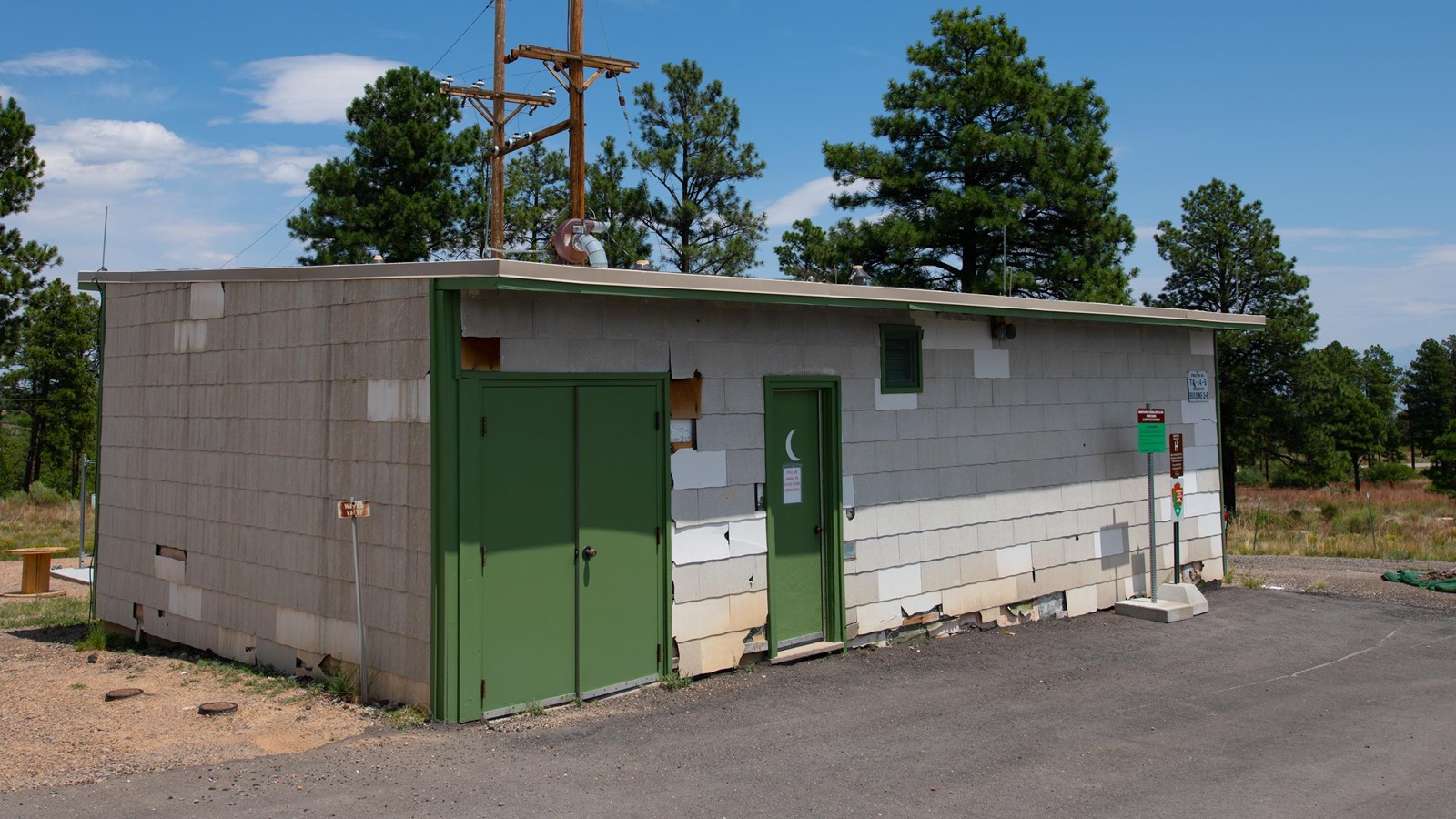Last updated: March 15, 2022
Place
Q-Site

LOS ALAMOS NATIONAL LABORATORY
This site is on Los Alamos National Laboratory property and cannot be accessed by members of the public.
At Q-Site, innovative new photography techniques helped scientists understand small-scale implosion. Using a rotating prism camera, X-ray and photographic techniques gathered data about cylinder implosions.
A 1947 report on Project Y talks about the photography tests:
The rotating prism or mirror techniques and the high explosive flash technique gave shadow photography of imploding cylinders. By a device which gave a succession of high explosive flashes it was possible to obtain images on the same negative at different stages of collapse. Hemispherical implosions were observed by reflected high explosive flash light, and photographed stereoscopic ally. These observations made it possible to verify predictions about jetting based on two-dimensional cylinder results, and served to remove the last possible doubt that the cylinder jets might be optical illusions.
Continue Your Journey
Behind the fence, near Q-Site, K-Site and L-Site were critical locations for studying and understanding implosion. Learn more about the history of the Manhattan by visiting the Bradbury Science Museum! The museum’s interactive exhibits share stories from the project and provide a glimpse of other “behind the fence” historical sites.
